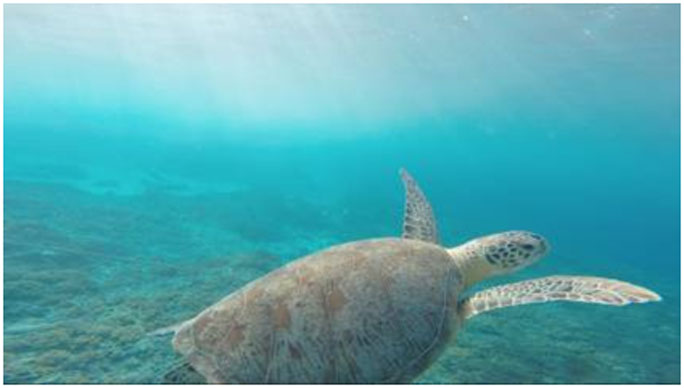
A bachelor's degree is the minimum requirement for most persons wishing to enter the field. Consequently, a strong background in high school science and mathematics is particularly important. Many high schools now offer marine sciences courses that not only offer career awareness experiences but also provide a basis for future studies in oceanography. The University Laboratory High School at the University of Hawaii schedules a year-long marine science course for its students. It has become a model for many schools.
Oceanographic technicians normally receive their training at a two-year community college or at a trade or technical school such as Leeward Community College (Hawaii), Florida Keys Community College, and the Southern Maine Vocational Technical Institute. Technicians assist in a variety of chemical and physical tests on waves, current flow, or water analysis. They maintain supplies and equipment in laboratories on shore and on research vessels at sea. Typical of their programs is the program in applied marine biology and oceanography at Southern Maine Vocational Technical Institute, which carries the following description:
The program prepares students for jobs as research assistants or technicians. The curriculum emphasizes laboratory and field procedures commonly used by private, state, and federal agencies involved in marine and environmental quality research and monitoring.
The program, which leads to an associate degree, involves various oceanography experiences, including time aboard the school's ship, the Aqua Lab III. Some four-year undergraduate schools have a complete program in marine sciences. Many offer courses; a few provide a major in oceanography. Students typically take courses like one offered at Oregon State University. Entitled The Sea, the course carries the following description:
The basic principles of oceanography are demonstrated by current active research. Topics covered are: the formation of ocean basins, seawater, the atmosphere, and the origin of life; the interactions of the oceans, atmosphere, and climate; the geology of life of sub-sea volcanoes; waves, tides, and phenomena such as El Nino. This is clearly an exciting and interesting course.
At Moody College of Marine Sciences at Texas A & M University in Galveston, Texas, they have initiated a new program entitled, Marine Sciences with a License Option: "The program retains the basic physical core of the marine sciences program but leads as well toward a United States Coast Guard License." A person who completes the curriculum can take the United States Coast Guard Examination as a third mate aboard a ship of any gross tonnage upon the oceans.
Combining course work in two areas assists the graduate in obtaining a job. Some colleges permit undergraduates to take courses during the summer at their marine laboratories. Some of these schools are Duke University in North Carolina; the Marine Biological Laboratory at Woods Hole, Massachusetts; the University of Texas; Drake University in cooperation with Southampton College (Long Island, New York); Stanford University in California; and the University of Washington.
On the West Coast, the University of Southern California (USC) has a fine facility-the Catalina Marine Science Center. Located on Santa Catalina Island, twenty-two miles from Los Angeles, the center engages in a wide variety of activities, including undergraduate and graduate teaching and research. The center sports some of the most innovative and contemporary oceanographic equipment.
It should be noted that some marine biologists strongly recommend that undergraduate college students major in biology with an occasional elective in marine biology, and then major in the marine sciences in graduate school. One of USC's master's programs is unique: the Master of Marine Affairs. The program contains a number of options but largely focuses upon marine policy. It provides sound training in management and basic work in marine sciences combined with three areas of emphasis-marine policy, marine law, and marine economics.
Most oceanographers pursue advanced study beyond their college bachelor's degrees. Scripps Institution of Oceanography of the University of California at San Diego suggests that undergraduate work include the following:
- mathematics-through integral and differential calculus
- physics-with laboratory, one year, using calculus in its exposition
- chemistry-with laboratory, one year
- an additional year in either physics or chemistry
- biology and geology-minimum of one semester each
- foreign language-preparation in at least one language (German, Russian, or a Romance language)
Long recognized for its leadership in the field, the University of Miami offers many graduate programs in the marine sciences. The study of sedimentation is typical of courses for those majoring in marine geology and geophysics, which carries the following description: "Environmental processes, and agents that form, transport, and deposit sediments, and the interpretation of the resulting rocks." Located in an ideal setting, the school's facilities encompass several laboratories and research vessels.
JOB OUTLOOK
The number of oceanographers remains small (five to six thousand); however, many persons are employed in related careers. The profession will undoubtedly grow in the future, particularly with expected expansion in private industry. The increased interest and concern over the oceans will stimulate state and federal governments to increase employment in this field. Presently a large percentage of marine scientists (approximately 40 percent) work for the government. One such opportunity is with the National Oceanic and Atmospheric Administration (NOAA) of the Department of Commerce. NOAA oceanographers work in several exciting areas: some survey and chart the ocean floor, while others study the marine environment and its effect on the distribution and abundance of commercially available fish. Naturally, activities vary with the geography; oceanographers study the species peculiar to the area-salmon or tuna on the West Coast and lobsters or clams on the East Coast.
See the following articles for more information:
- Find Your Calling: A Checklist
- 5 Ways To Build Your Career Outside of the Office
- How To Impress Your Interviewer When Making a Career Change
- 5 Tips For Successful Networking
